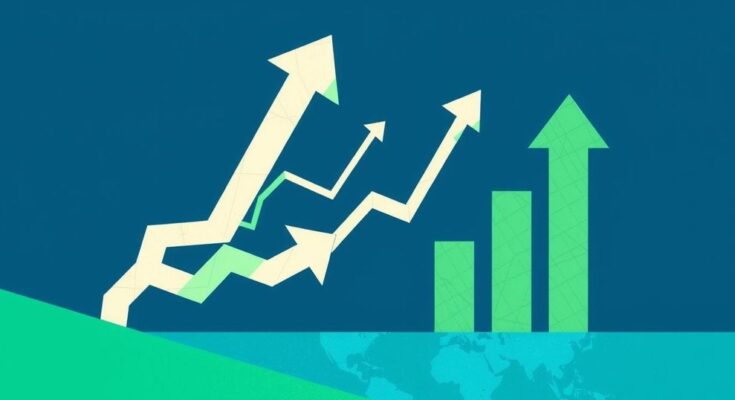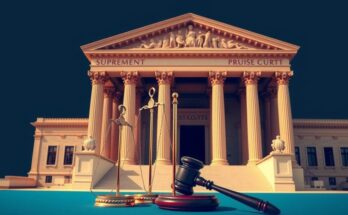Recent developments have ignited a political storm regarding Federal Reserve Chair Jerome Powell’s position. With President Trump’s harsh words aimed at Powell, speculation is swirling around the potential of new Fed leadership looming on the horizon. Could Trump’s dissatisfaction signal immediate changes for the central bank? As markets react and candidates rise and fall in conversation, the Fed’s path seems fraught with uncertainty and political tension. With significant implications for interest rates and economic stability, all eyes are on the White House and what this means for our monetary policy moving forward.
Trump Intensifies Criticism of Fed Chair Powell
Federal Reserve Chair Jerome Powell’s week on Capitol Hill was mostly calm, but it now seems like a storm is brewing. Trump, who nominated Powell almost eight years ago, is threatening his very authority as he looks to appoint someone new to lead the bank come next year. At a NATO summit in The Hague, Trump made his disdain for Powell clear, referring to him in derogatory terms. “I think he’s terrible,” Trump said. Commenting further, he labeled Powell a “very average mentally person” and accused him of having a low IQ for his role. This barrage of words, while not new for Trump, takes on a more threatening tone, suggesting he might take action soon. Their relationship seems to be rapidly cooling into something quite bitter, creating tension in both political and economic spheres.
Wall Street Reacts to Threat of Shadow Chair
Now, Wall Street is buzzing as whispers of a potential “shadow chair” surface—a figure Trump could use to stir things up within the Fed until Powell’s tenure ends in May 2026. Following Trump’s comments, traders have accelerated their bets on interest rate cuts, with the odds swelling to about 60% for three cuts this year, up from a more moderate expectation of two just days prior. This rapid change in sentiment contributed to Treasury yields slipping sharply on the short end, showcasing just how interconnected political chatter can be with economic forecasting. Meanwhile, the US dollar fell sharply against other currencies, reflecting the market’s nervousness. Powell’s future seems ever more uncertain amid these concerns.
Possible Candidates for Fed Leadership Emergence
Trump is reportedly considering a shortlist of new candidates to replace Powell, narrowing down to about three or four people, though the suspense is thick as the names remain under wraps. Speculations have been rampant, with potential candidates reportedly including Treasury Secretary Scott Bessent, National Economic Council Director Kevin Hassett, and former Fed Governor Kevin Warsh. There’s even talk of Christopher Waller, currently a Fed governor and a Trump appointee, entering the mix as a potential dark horse, simply because he’s recently advocated for lowering interest rates. It’s clear that Bessent’s name keeps popping up as a likely candidate, although he has distanced himself from wanting the role—at least for now.
Challenges of an Active Fed
Amid all this, the political atmosphere isn’t the only complicating factor, as Trump’s ambitions seem skittish considering the current lack of vacancies at the Fed. There’s certainly a case for arguing that his plan to rush in a new chair is a bit shaky at best; Powell’s term is secure until 2028, albeit the chair role expires next year and there’s a governor slot coming open in 2026. Experts voice concerns. “This plan probably isn’t constitutional and would politicize the Fed for a few months before stability is restored next May,” said Greg Valliere from AGF Perspectives, highlighting the potential damages to the Fed’s credibility should Trump act as a monetary backseat driver. It’s treacherous waters in terms of the Fed’s independence if this path unfolds.
Current Actions and Political Independence of the Fed
This whole saga plays out against a profoundly busy backdrop for the Federal Reserve. Recently, the Fed made notable moves: they altered criteria for bank exams to remove perceptions of risk and relaxed capital reserve requirements for bigger institutions. The latter was pushed forward by Michelle Bowman, currently serving as Vice Chair for Supervision. This could certainly align with Trump’s long-standing complaints regarding de-banking practices across the banking landscape. However, Powell’s group remains unmoved on a critical issue—lowering interest rates—as Trump continues to express his dissatisfaction. Chicago Fed President Austan Goolsbee emphasized that their decisions remain free from political pressures. “Just look at the minutes and transcripts, you can see, word for word, what the rationales are in making the decisions, and they’re not about elections and partisan politics,” he explained, subtly pushing back against Trump’s suggestions that the Fed is somehow playing a political game.
When does Powell’s term as Fed Chair expire?
The Federal Reserve Chair, Jerome Powell, remains in position until 2028. However, his current chair tenure expires next year in May, opening the door for a possible replacement.
How many candidates is Trump considering for Fed Chair?
According to Trump, he’s considering around three or four candidates to potentially replace Powell, but hasn’t publicly disclosed their names yet.
How have Trump’s comments impacted interest rate predictions?
There has been a notable increase in debate over interest rate cuts within the market, as traders have begun betting more significantly on them following Trump’s recent comments about Powell.
Why is Trump’s potential naming of a new Chair problematic right now?
It seems that Trump’s desire to push for a new Fed Chair comes amidst the divisive political climate, complicating the situation further for Powell and the Fed.
What risks come with appointing a shadow chair?
Valliere highlighted that appointing a shadow chair could politicise the Fed and disrupt its credibility, leading to instability in the economy until the situation is resolved.




